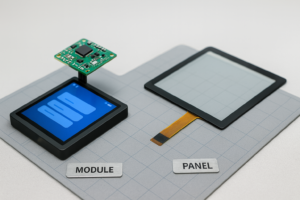In today’s digital age, understanding the design principles for enhancing touchscreen user experience is crucial for creating effective interfaces. As the reliance on touchscreen technology grows, so does the importance of designing interfaces that are not only functional but also intuitive and user-friendly. This article explores key design principles for enhancing touchscreen user experience, ensuring that users can interact seamlessly with their devices.
Understanding Users and Context in Touchscreen Design Principles
The foundation of a great touchscreen user interface (UI) lies in understanding touchscreen UI design from the perspective of the users and the context in which the interface will be used. Before diving into design, consider the following:
- User Needs: Identify the primary functions that users need to perform. A beautiful interface with numerous features is futile if it doesn’t support users’ essential tasks.
- Usage Environment: Consider where and how the touchscreen will be used. Is it a mobile device used on the go, or a fixed kiosk in a controlled environment?
- User Demographics: Tailor the interface to accommodate users’ technical skills and familiarity with touchscreen technology.
Understanding these factors helps in creating a pragmatic and accessible interface, as emphasized in the Biamp blog on touchscreen UI design best practices.
Key Design Principles for Enhancing Touchscreen User Experience
1. Pragmatism and Accessibility
A pragmatic design focuses on functionality tailored to user needs. Accessibility ensures that touchscreen UI design is simple enough for all users to understand and use effectively. Key actions should be easily accessible without navigating through multiple layers.
2. Intentional Design
Every element on the touchscreen should serve a purpose. Ask yourself:
- Is this function necessary?
- How does it benefit the user?
- Can the process be simplified?
Design elements should be clear and concise, minimizing the cognitive load on users.
3. Intuitive Interactions
Users should interact with the interface without overthinking. Familiarity plays a crucial role here. Interfaces that resemble common designs are easier for users to navigate. The Parachute Design blog highlights the importance of intuitive design to prevent user frustration.
4. Visual Appeal
An attractive interface enhances user satisfaction. While aesthetics are subjective, understanding your audience’s preferences can guide design choices. The goal of touchscreen UI design should be to create a visually appealing interface that users are eager to engage with.
Best Practices for Implementing Design Principles in Touchscreen Interfaces
1. Touchable Elements
Ensure that touchscreen UI design includes buttons and links large enough for users to tap easily. Apple recommends a minimum size of 44×44 pixels for touchable elements, a guideline supported by Medium’s article on touchscreen best practices.
2. Responsive Navigation
Navigation should be accessible at all times. Implementing a “hamburger” menu or a sticky navigation bar ensures users can find their way around without hassle.
3. Optimize for Thumb Zones
Most users interact with devices using their thumbs. Design interfaces with the thumb zone in mind, placing important elements within easy reach to enhance usability.
4. Eliminate Clutter
Too many elements on a screen can overwhelm users. Keep the interface clean and focused on essential functions. Use white space strategically to improve readability and navigation.
5. Feedback Mechanisms
Incorporate feedback mechanisms like haptic feedback to confirm user actions. This can prevent accidental inputs and improve user confidence, as discussed in Pannam’s guide to effective touchscreen design.
The Role of Ergonomics in Touchscreen User Experience
Ergonomic design is crucial for prolonged use of touchscreen devices. Interfaces should be comfortable and efficient, minimizing strain on users. Regular user feedback and testing can help identify ergonomic improvements, as noted in the Tushan article on touchscreen keypads. Ergonomics can also be integrated into touchscreen UI design for better user experience.
Conclusion: Applying Design Principles for Enhancing Touchscreen User Experience
In conclusion, applying the design principles for enhancing touchscreen user experience requires a deep understanding of user needs, intentional design, and adherence to best practices. By focusing on pragmatism, accessibility, and intuitive interactions, designers can create interfaces that are both functional and visually appealing. As touchscreen technology continues to evolve, staying informed about the latest design principles and user preferences will be key to delivering exceptional user experiences.
.png)



